-
 Bitcoin
Bitcoin $119800
1.38% -
 Ethereum
Ethereum $3873
3.25% -
 XRP
XRP $3.247
1.85% -
 Tether USDt
Tether USDt $1.001
0.02% -
 BNB
BNB $840.4
5.94% -
 Solana
Solana $190.0
2.55% -
 USDC
USDC $1.000
0.03% -
 Dogecoin
Dogecoin $0.2433
2.69% -
 TRON
TRON $0.3197
-0.05% -
 Cardano
Cardano $0.8367
1.39% -
 Sui
Sui $4.327
3.11% -
 Hyperliquid
Hyperliquid $44.00
0.31% -
 Stellar
Stellar $0.4461
1.76% -
 Chainlink
Chainlink $19.25
4.61% -
 Hedera
Hedera $0.2941
3.90% -
 Bitcoin Cash
Bitcoin Cash $598.4
6.89% -
 Avalanche
Avalanche $26.19
4.67% -
 Litecoin
Litecoin $115.1
0.50% -
 Shiba Inu
Shiba Inu $0.00001427
1.55% -
 Toncoin
Toncoin $3.379
2.01% -
 UNUS SED LEO
UNUS SED LEO $8.966
-0.16% -
 Ethena USDe
Ethena USDe $1.001
0.02% -
 Uniswap
Uniswap $11.04
4.16% -
 Polkadot
Polkadot $4.239
2.00% -
 Monero
Monero $324.6
0.36% -
 Bitget Token
Bitget Token $4.672
2.46% -
 Pepe
Pepe $0.00001294
2.69% -
 Dai
Dai $0.0000
0.01% -
 Cronos
Cronos $0.1443
2.71% -
 Aave
Aave $302.9
1.98%
What does the monthly level breakthrough mean? The entry signal of long-term funds
A monthly level breakthrough, where crypto price closes above a key resistance on a monthly chart, signals a strong bullish trend for long-term fund entry.
Jun 10, 2025 at 12:42 am
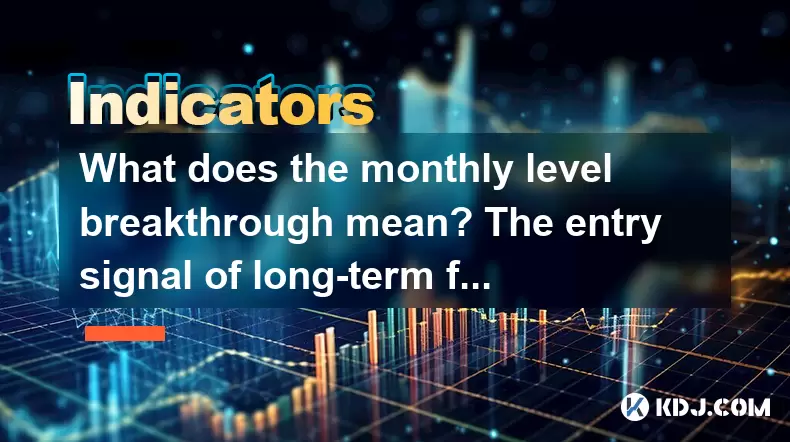
What does the monthly level breakthrough mean? The Entry Signal of Long-Term Funds
In the world of cryptocurrency, understanding market trends and identifying entry signals for long-term investments is crucial for investors looking to maximize their returns. One of the key indicators that traders and investors watch closely is the monthly level breakthrough. This phenomenon, when analyzed correctly, can serve as a powerful entry signal for long-term funds. Let's delve into what a monthly level breakthrough entails and how it can be used as a signal for entering long-term positions.
Understanding Monthly Level Breakthroughs
A monthly level breakthrough refers to a situation where the price of a cryptocurrency breaks above a significant resistance level on a monthly chart. This resistance level could be a historical high, a psychological round number, or a level where the price has previously struggled to move beyond. When the price successfully breaks and closes above this level on a monthly chart, it is considered a strong bullish signal.
The importance of a monthly level breakthrough lies in its ability to indicate a shift in market sentiment. When a cryptocurrency breaks above a long-standing resistance level, it suggests that the bulls have taken control and that there is enough buying pressure to push the price higher. This is particularly significant on a monthly chart because it reflects longer-term trends and is less susceptible to short-term market noise.
Identifying Monthly Level Breakthroughs
To effectively identify a monthly level breakthrough, traders need to follow a systematic approach. Here are the steps to identify this phenomenon:
- Analyze Historical Price Data: Start by reviewing the historical price data of the cryptocurrency on a monthly chart. Look for significant resistance levels that have been tested multiple times in the past.
- Monitor Price Action: Keep an eye on the current price action and watch for the cryptocurrency to approach and potentially break above the identified resistance level.
- Confirm the Breakthrough: A true monthly level breakthrough is confirmed when the price closes above the resistance level at the end of the month. It's important to wait for the monthly close to confirm the breakout, as false breakouts can occur during the month.
The Significance of Monthly Level Breakthroughs for Long-Term Funds
For long-term funds, a monthly level breakthrough is a critical entry signal. This is because it indicates a potential start of a new bullish trend that could last for several months or even years. Here’s why long-term funds pay close attention to these breakthroughs:
- Strong Bullish Signal: A monthly level breakthrough is a strong bullish signal that suggests the cryptocurrency is likely to continue its upward trajectory. This makes it an attractive entry point for long-term investors.
- Reduced Risk: Entering a position after a monthly level breakthrough can reduce the risk for long-term funds. The breakout confirms that the resistance level has been overcome, reducing the likelihood of an immediate reversal.
- Potential for Significant Gains: Since monthly level breakthroughs indicate the start of a new trend, long-term funds can benefit from significant price appreciation over time.
Practical Example of a Monthly Level Breakthrough
To illustrate how a monthly level breakthrough works, let's consider a hypothetical example with Bitcoin (BTC). Suppose Bitcoin has been trading below a significant resistance level of $60,000 for several months. Traders have been watching this level closely, as it has been a major barrier in the past.
In a given month, Bitcoin approaches the $60,000 level and, after some volatility, closes above this level at the end of the month. This monthly close above $60,000 would be considered a monthly level breakthrough. Long-term funds that have been waiting for this signal would see it as an opportunity to enter a long position, expecting the price to continue its upward trend.
Strategies for Entering Long-Term Positions After a Breakthrough
Once a monthly level breakthrough is confirmed, long-term funds need to strategize their entry. Here are some strategies they might consider:
- Immediate Entry: Some funds may choose to enter the position immediately after the monthly close confirms the breakthrough. This approach allows them to capitalize on the initial momentum following the breakout.
- Wait for Pullback: Other funds might wait for a pullback to the breakout level before entering. This strategy can provide a better entry price and a clearer risk-reward profile.
- DCA (Dollar-Cost Averaging): Another approach is to use dollar-cost averaging, where the fund invests a fixed amount of money at regular intervals after the breakthrough. This can help mitigate the risk of entering at a peak.
Risk Management After Entering a Position
After entering a long-term position following a monthly level breakthrough, it's essential for funds to implement robust risk management strategies. Here are some key considerations:
- Set Stop-Loss Orders: Placing a stop-loss order below the breakout level can help limit potential losses if the price reverses.
- Monitor Market Conditions: Continuously monitor market conditions and be ready to adjust the position if necessary. This includes keeping an eye on broader market trends and any significant news that could impact the cryptocurrency.
- Regularly Review the Position: Regularly review the position to ensure it still aligns with the fund's investment thesis. If the market dynamics change, it may be necessary to exit the position.
Case Studies of Successful Monthly Level Breakthroughs
To further understand the impact of monthly level breakthroughs, let's look at some real-world examples from the cryptocurrency market.
- Bitcoin in 2020: In December 2020, Bitcoin broke above the $20,000 resistance level on a monthly chart. This breakthrough was followed by a significant bullish trend that saw Bitcoin reach new all-time highs in the following months. Long-term funds that entered after this breakthrough were able to benefit from substantial gains.
- Ethereum in 2021: Ethereum experienced a monthly level breakthrough above $2,000 in April 2021. This breakout signaled the start of a strong bullish trend that saw Ethereum reach over $4,000 by the end of the year. Funds that entered after this breakthrough enjoyed significant returns.
Tools and Resources for Monitoring Monthly Level Breakthroughs
To effectively monitor and identify monthly level breakthroughs, long-term funds can utilize various tools and resources. Here are some recommended options:
- TradingView: This platform offers advanced charting tools that allow users to plot monthly charts and identify significant resistance levels. It also provides customizable alerts to notify users of potential breakouts.
- CoinGecko and CoinMarketCap: These websites provide comprehensive historical price data for various cryptocurrencies, making it easier to analyze past price movements and identify key levels.
- Crypto-specific News Sites: Staying updated with the latest news and analysis from reputable crypto news sites can provide additional context and insights into potential monthly level breakthroughs.
Conclusion
Understanding and identifying monthly level breakthroughs is a vital skill for long-term funds in the cryptocurrency market. These breakthroughs serve as powerful entry signals that can indicate the start of significant bullish trends. By following a systematic approach to identifying these breakthroughs and implementing effective entry and risk management strategies, long-term funds can position themselves to capitalize on the potential for substantial gains.
Frequently Asked Questions
Q: Can monthly level breakthroughs occur on other time frames, such as weekly or daily charts?
A: Yes, breakthroughs can occur on various time frames, including weekly and daily charts. However, monthly level breakthroughs are considered more significant because they reflect longer-term trends and are less influenced by short-term market fluctuations.
Q: How can I differentiate a false breakout from a true monthly level breakthrough?
A: Differentiating a false breakout from a true monthly level breakthrough requires careful observation. A false breakout often occurs when the price briefly breaks above the resistance level but fails to sustain the move and closes back below the level by the end of the month. A true breakthrough is confirmed when the price closes above the resistance level at the end of the month and continues to show bullish momentum in the following months.
Q: Are there any specific cryptocurrencies that are more likely to experience monthly level breakthroughs?
A: While any cryptocurrency can experience a monthly level breakthrough, major cryptocurrencies like Bitcoin and Ethereum are more closely watched by investors and traders. These assets tend to have more liquidity and broader market interest, which can lead to more significant and sustained breakouts.
Q: What other technical indicators should be used in conjunction with monthly level breakthroughs?
A: To enhance the reliability of monthly level breakthroughs, traders often use additional technical indicators such as moving averages, the Relative Strength Index (RSI), and the Moving Average Convergence Divergence (MACD). These indicators can provide further confirmation of the bullish trend and help identify potential entry and exit points.
Disclaimer:info@kdj.com
The information provided is not trading advice. kdj.com does not assume any responsibility for any investments made based on the information provided in this article. Cryptocurrencies are highly volatile and it is highly recommended that you invest with caution after thorough research!
If you believe that the content used on this website infringes your copyright, please contact us immediately (info@kdj.com) and we will delete it promptly.
- Bitcoin, Ethereum, Lost Forever: A Billion-Dollar Digital Black Hole
- 2025-07-28 14:30:12
- Cryptos Surge: Decoding the Blockchain Buzz with SUI, Unilabs, and Beyond
- 2025-07-28 15:10:12
- Shiba Inu: From Meme Coin to Millionaire Maker...Again?
- 2025-07-28 15:10:12
- Crypto Lending, Iris Scanning, and Unsecured Loans: A New Frontier?
- 2025-07-28 15:30:12
- Metaplanet's Bitcoin Bonanza: Tokyo's Answer to MicroStrategy?
- 2025-07-28 15:30:12
- Binance, Crypto, and Blockchain: CZ's Vision, BNB's Surge, and the Meme Coin Mania – A New York Minute on the Future
- 2025-07-28 15:35:17
Related knowledge
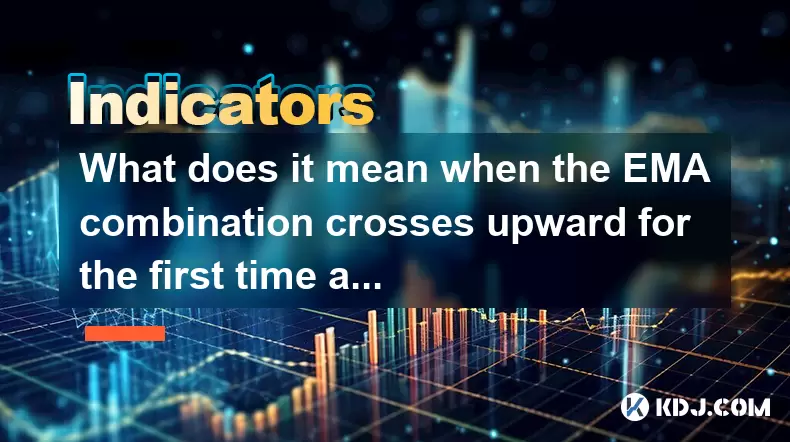
What does it mean when the EMA combination crosses upward for the first time after sideways trading?
Jul 28,2025 at 03:43pm
Understanding the EMA and Its Role in Technical AnalysisThe Exponential Moving Average (EMA) is a widely used technical indicator in cryptocurrency tr...
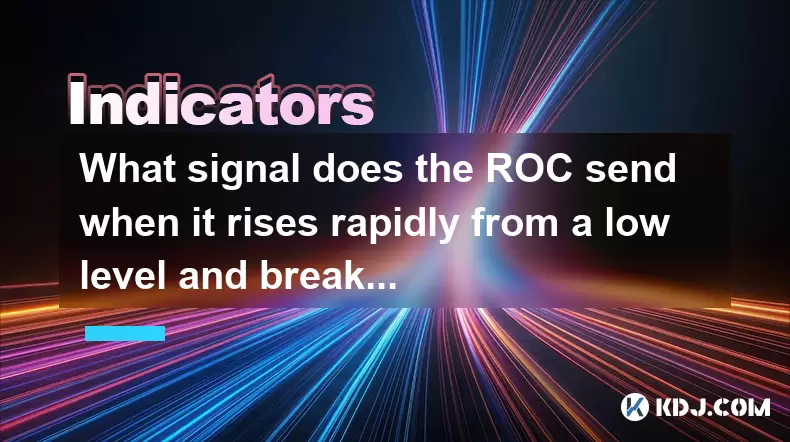
What signal does the ROC send when it rises rapidly from a low level and breaks through the zero axis?
Jul 27,2025 at 10:15am
Understanding the Rate of Change (ROC) IndicatorThe Rate of Change (ROC) is a momentum-based oscillator used in technical analysis to measure the perc...
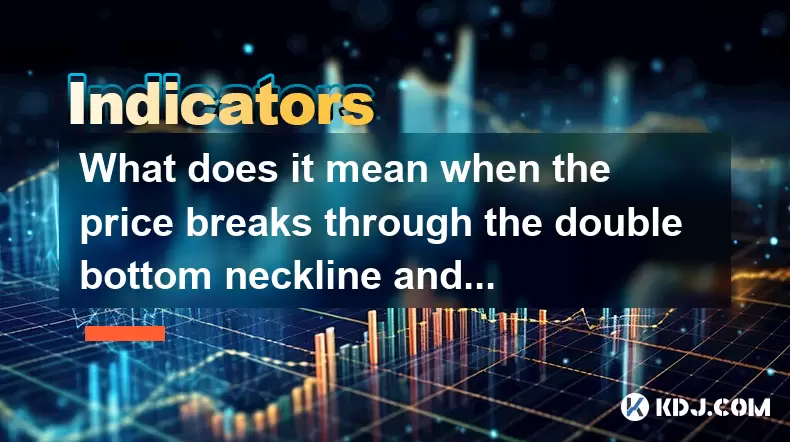
What does it mean when the price breaks through the double bottom neckline and the moving averages are arranged in a bullish pattern?
Jul 28,2025 at 10:57am
Understanding the Double Bottom PatternThe double bottom is a widely recognized reversal chart pattern in technical analysis, particularly within the ...
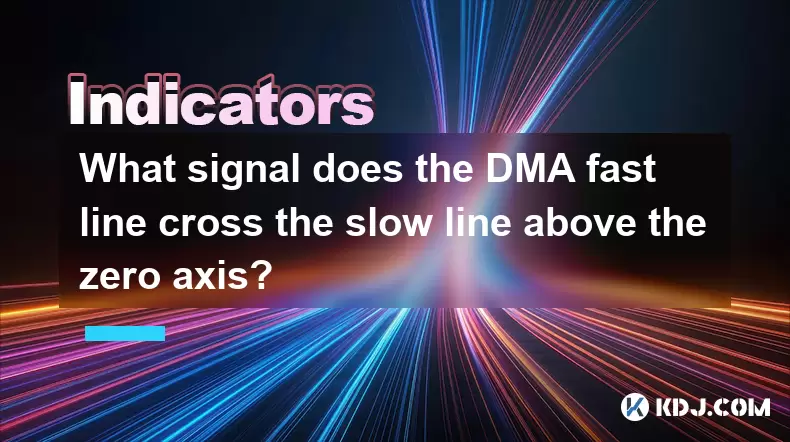
What signal does the DMA fast line cross the slow line above the zero axis?
Jul 28,2025 at 05:42am
Understanding the DMA Indicator and Its ComponentsThe DMA (Difference of Moving Averages) indicator is a technical analysis tool used in cryptocurrenc...
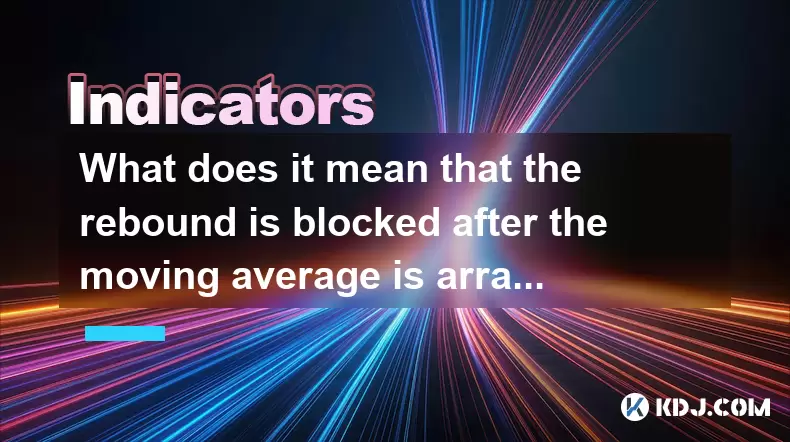
What does it mean that the rebound is blocked after the moving average is arranged in a short position for the first time?
Jul 26,2025 at 10:51am
Understanding the Short-Term Moving Average ConfigurationWhen traders refer to a 'short position arrangement' in moving averages, they are describing ...
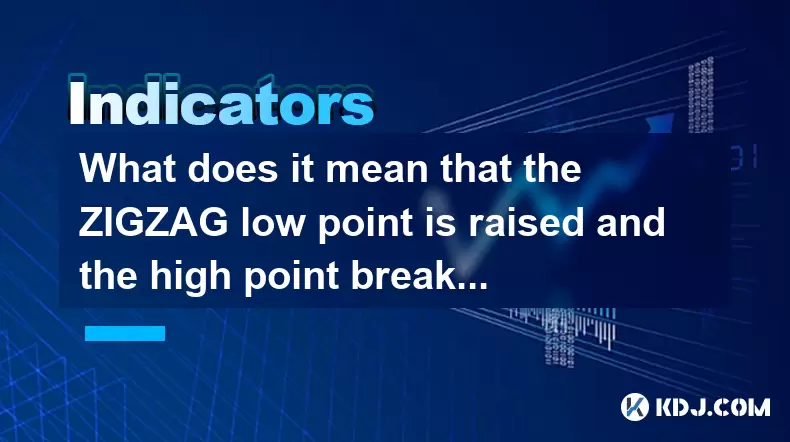
What does it mean that the ZIGZAG low point is raised and the high point breaks through the previous peak?
Jul 28,2025 at 03:28am
Understanding the ZIGZAG Indicator in Cryptocurrency TradingThe ZIGZAG indicator is a technical analysis tool widely used in cryptocurrency trading to...

What does it mean when the EMA combination crosses upward for the first time after sideways trading?
Jul 28,2025 at 03:43pm
Understanding the EMA and Its Role in Technical AnalysisThe Exponential Moving Average (EMA) is a widely used technical indicator in cryptocurrency tr...

What signal does the ROC send when it rises rapidly from a low level and breaks through the zero axis?
Jul 27,2025 at 10:15am
Understanding the Rate of Change (ROC) IndicatorThe Rate of Change (ROC) is a momentum-based oscillator used in technical analysis to measure the perc...

What does it mean when the price breaks through the double bottom neckline and the moving averages are arranged in a bullish pattern?
Jul 28,2025 at 10:57am
Understanding the Double Bottom PatternThe double bottom is a widely recognized reversal chart pattern in technical analysis, particularly within the ...

What signal does the DMA fast line cross the slow line above the zero axis?
Jul 28,2025 at 05:42am
Understanding the DMA Indicator and Its ComponentsThe DMA (Difference of Moving Averages) indicator is a technical analysis tool used in cryptocurrenc...

What does it mean that the rebound is blocked after the moving average is arranged in a short position for the first time?
Jul 26,2025 at 10:51am
Understanding the Short-Term Moving Average ConfigurationWhen traders refer to a 'short position arrangement' in moving averages, they are describing ...

What does it mean that the ZIGZAG low point is raised and the high point breaks through the previous peak?
Jul 28,2025 at 03:28am
Understanding the ZIGZAG Indicator in Cryptocurrency TradingThe ZIGZAG indicator is a technical analysis tool widely used in cryptocurrency trading to...
See all articles

























































































